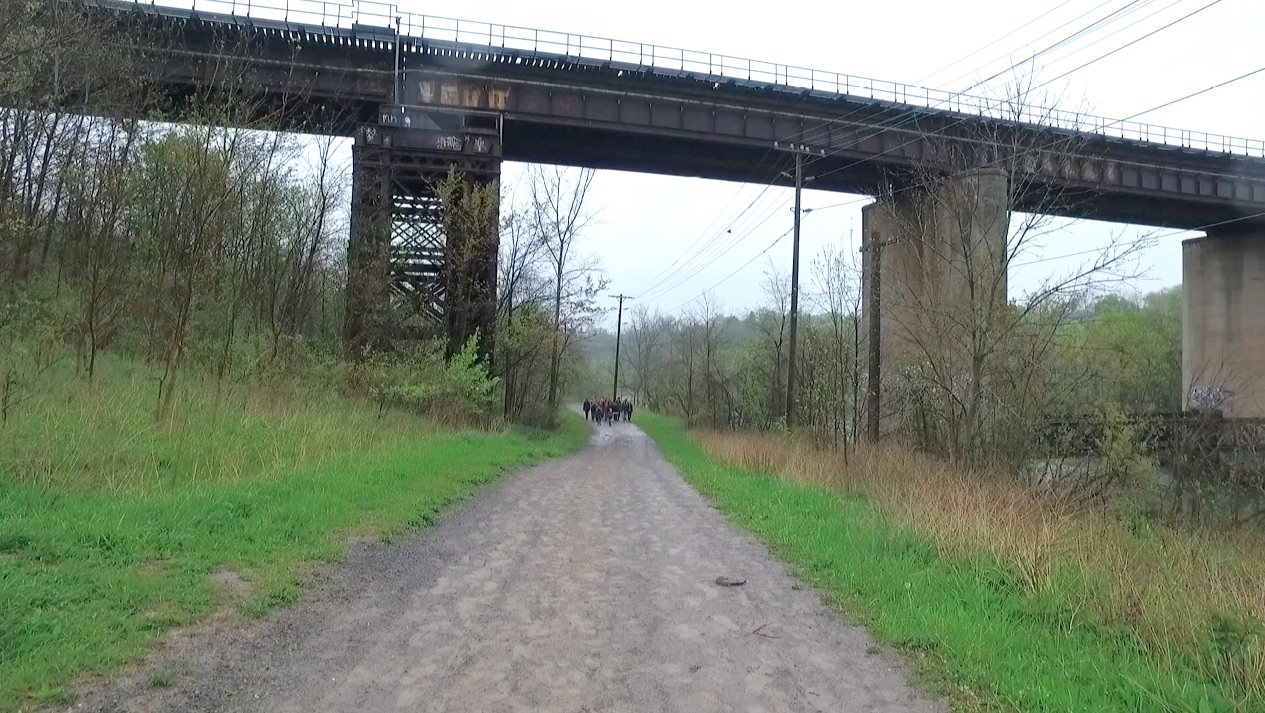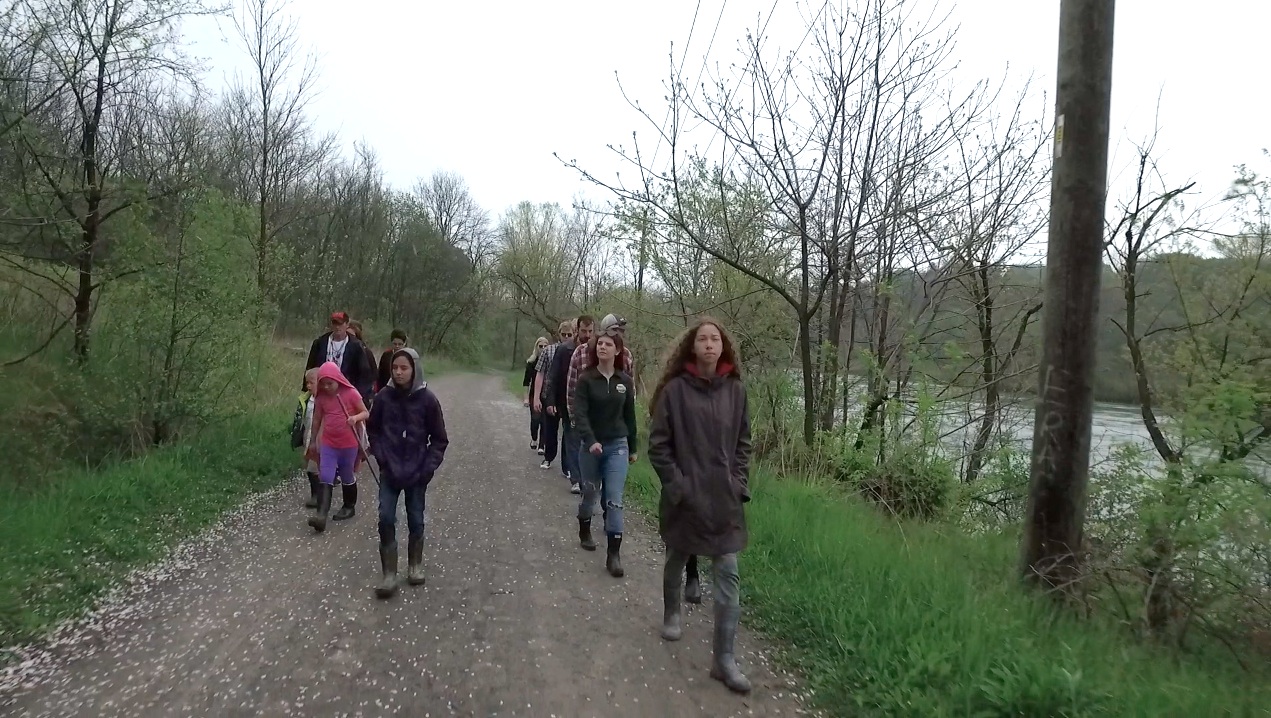Walking the Talk, 2016
single channel video, no audio
5:21
The Two Row Wampum was the first treaty between the Haudenosaunee and Europeans (Dutch) and had its 400th anniversary in 2013. The agreement is to live in peace, friendship and respect in parallel co-existence. Many people, indigenous and settler, are working to renew this treaty. I recruited participants for this video primarily via social media and on site asked them to self-identify as indigenous or other. We walked the same route on a trail by Twelve Mile Creek twice, in Two Rows and as a group. In both shots the people are moving towards us/the camera until the end. Everyone who was willing stood for a close-up of a set of gestures to their eye, ear and mouth. I used this imagery in a body of work in the 1990s and was inspired to return to it by the idea of the treaty as a spoken and listened to promise that must be honoured, embodied and lived.
I am a settler who looks to the treaties for guidance for the present and future. I have received many teachings on the Two Row over many years and have discussed my responsibility to make this work with knowledge keeper, Rick Hill.
Participants
Liv Aspden, Kaidi Bishop, Marie Bowering, Avrie Bowering, Brielle Bowering, Fred Bowering, Warren Buzanko, Molly Cochrane, Aurora Drakeford, Anthony Drakeford, Christian Lange, Brandon Lange, Kayla Lipiec-Braun, Zion Russell, Bryson Tsanoff, Carmyn Wrighton, Mike Zettel
Camera: Merv Wrighton, Ubu Video Productions
Exhibited in Elizabeth Chitty: The Grass Is Still Green, at Rodman Hall Art Centre, 2016. Other works in this exhibition were The Grass Is Still Green, 2 digital prints and vinyl text, and The Grass Is Still Green artist garden. The exhibition was winner of the 2017 OAAG Award, Exhibition of the Year Under, $10,000. The jury noted: “This exhibition expands the gallery into the surrounding lands. The artist is a veteran performance artist, cultural worker and defender of artist’s rights on the Canadian scene who breaks ground and enables the land to speak its local history. The contours of the resulting land work invites the community into a conversation about and a walk through history.”


